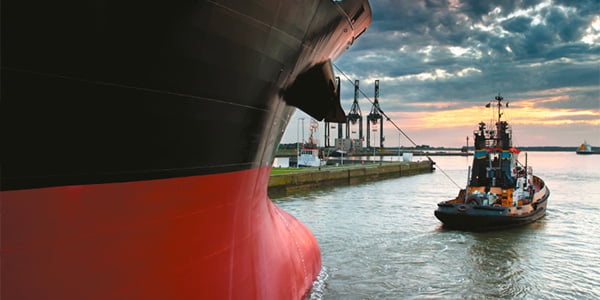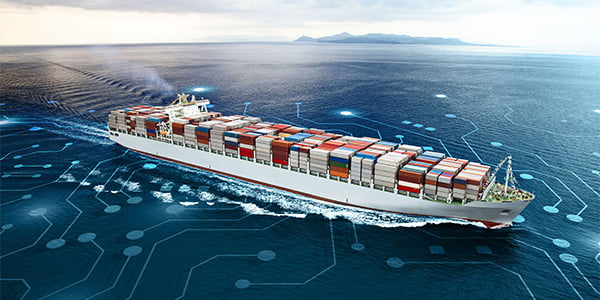Maritime Cybersecurity
Protecting Your Vessel’s Digital and Operational Integrity with
Multi-Layered Defence
Get a quote todayDefinition & Benefits
Maritime cybersecurity encompasses the protection of both Information Technology (IT) and Operational Technology (OT) systems aboard vessels and offshore platforms from malicious cyber activities. A robust cybersecurity program minimises the risk of system disruptions, navigational errors, and data breaches, ensuring:
- Operational Continuity – Prevent unplanned downtime of critical systems such as propulsion, navigation, and communications.
- Safety Assurance – Shield life-safety equipment (alarms, firefighting controls) from unauthorised access or manipulation.
- Regulatory Compliance – Meet IMO, IACS, USCG, and NIS 2 requirements to avoid detentions, fines, and increased insurance premiums.
- Reputation & Financial Protection – Reduce exposure to ransom demands, litigation costs, and reputational damage from publicised incidents.

Installation & Integration
Governance & Policies – Establish clear cyber-risk management procedures in your Safety Management System (SMS), designate a Cybersecurity Officer, and conduct regular risk assessments.
Continuous Monitoring – Deploy intrusion detection/prevention systems (IDPS), log aggregation, and threat-intelligence feeds to detect anomalies in real-time.
Access Controls & Authentication – Enforce strong passwords, multi-factor authentication (MFA), and least-privilege user roles across all systems.
Network Segmentation – Isolate critical OT networks (e.g., engine control, navigation) from general IT and guest networks to limit lateral movement of threats.
Patch Management & Virtual Patching – Maintain up-to-date software and firmware on IT endpoints, and apply virtual patches via network controls for legacy OT devices that cannot be directly updated.
Integration
Seamless integration ensures cybersecurity measures complement existing vessel systems:
- Assessment & Architecture Review
- Map IT/OT assets, data flows, and external connections to design an appropriate security architecture.
- Technology Deployment
- Install firewalls, IDPS, secure VPN gateways, and endpoint protection without disrupting operational workflows.
- Legacy System Protection
- Employ wrappers or proxy appliances to encrypt and authenticate communications for legacy control systems.
- Crew Training & Change Management
- Provide hands-on cybersecurity awareness sessions and drill incident-response scenarios to crew and shore teams.
- Ongoing Support & Updates
Regularly review network logs, apply patches, and adjust policies as new threats emerge.
Cost Expectations
Cybersecurity investments cover initial assessments, technology deployment, training, and ongoing maintenance. Costs vary by vessel size, system complexity, and compliance scope; for precise budgeting, get a tailored quote that aligns with your risk profile and regulatory requirements.
Ensure optimal resilience, compliance, and cost-efficiency.
Use Cases
- Container & Bulk Carriers: Protect ECDIS, AIS, and engine-monitoring networks from spoofing and unauthorised access.
- Offshore Rigs & Platforms: Secure remote control systems, SCADA networks, and safety shutdown mechanisms.
- Yachts & Superyachts: Safeguard onboard entertainment, guest Wi-Fi, and smart-device ecosystems.
- Passenger Ferries & Cruise Ships: Defend ticketing systems, passenger data, and critical safety alarms.
- Research & Survey Vessels: Maintain the integrity of sensor networks, data collection pods, and communication links.

Incident Response & Recovery
Detection & Triage – Use automated alerts and log analysis to identify suspected breaches.
Recovery – Restore systems from secure backups, validate the integrity of restored data, and resume normal operations.
Containment – Segment affected networks, isolate compromised devices and block malicious traffic.
Post-Incident Analysis – Conduct root-cause investigations, update policies, and refine training based on lessons learned.
Eradication & Remediation – Remove malware, apply patches, and harden configurations to close attack vectors.
FAQS
What’s the difference between IT and OT cybersecurity on vessels?
IT cybersecurity protects business and administrative systems (e.g., email, ERP), while OT cybersecurity secures control and command systems (e.g., engine management, ballast control). Both require tailored controls due to differing protocols and risk profiles.
How often should cybersecurity risk assessments and penetration tests be performed?
Industry best practice is to conduct formal risk assessments and penetration tests at least annually, with additional evaluations after major system changes or incident discoveries.
What certifications or standards should my cybersecurity program adhere to?
Comply with IMO’s ISM Code requirements, IACS Unified Requirements E26/E27, USCG Cyber Final Rule, and ISO/IEC 27001 for information security management, where applicable.
How can legacy OT systems be protected without full replacement?
Deploy network segmentation, virtual patching appliances, and secure protocol wrappers to add encryption and authentication layers around unsupported legacy devices.